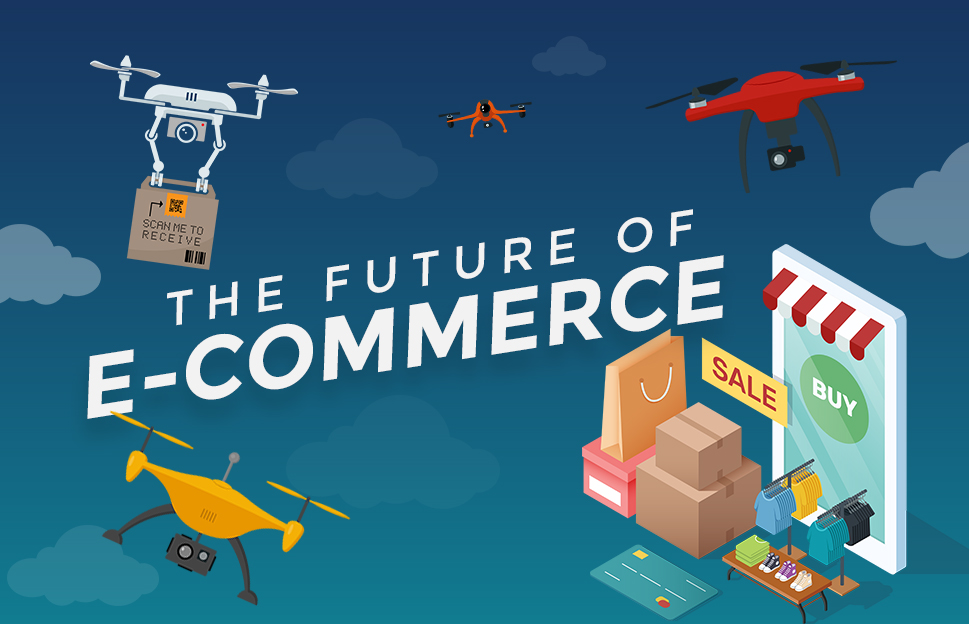
The digital marketplace is evolving faster than ever. From AI-powered personalization to immersive shopping experiences, the future of ecommerce is being shaped by innovation, consumer expectations, and global trends. As we move into 2025 and beyond, businesses must adapt to stay competitive in a landscape that’s becoming more intelligent, mobile, and customer-centric.
This blog explores the key trends, technologies, and strategies defining the future of ecommerce, and how brands can prepare for what’s next.
Growth Trajectory: E-commerce Is Just Getting Started
Global retail ecommerce sales are projected to reach nearly $7 trillion by 2025. With over 2.77 billion people expected to shop online, the future of ecommerce is not just bright—it’s explosive. But this growth also brings increased competition and higher consumer expectations.
To thrive, businesses must go beyond simply selling online. They need to create seamless, personalized, and secure shopping experiences that build trust and loyalty.
AI and Machine Learning: The Smart Shift

Artificial Intelligence (AI) and Machine Learning (ML) are no longer buzzwords—they’re foundational to the future of ecommerce. These technologies enable hyper-personalization, predictive analytics, and intelligent automation.
- Product Recommendations: AI analyzes browsing and purchase history to suggest items tailored to individual preferences.
- Dynamic Pricing: Algorithms adjust prices in real-time based on demand, inventory, and competitor activity.
- Chatbots and Virtual Assistants: AI-powered support tools offer instant, human-like customer service 24/7.
By leveraging AI, ecommerce brands can deliver smarter, faster, and more relevant experiences—key ingredients for long-term success.
Mobile-First Shopping: M-Commerce Takes Over
Mobile commerce (m-commerce) is set to dominate the future of ecommerce, especially in mobile-first markets like India. By 2025, over 70% of online transactions will be made via smartphones.
To stay ahead, brands must:
- Optimize websites for mobile usability
- Offer mobile-exclusive promotions
- Consider developing dedicated shopping apps
- Enable one-click payments and mobile wallets
A poor mobile experience is like a store with a locked door—customers will simply go elsewhere.
Social Commerce: Shopping Meets Social Media
Social media platforms are transforming into full-fledged ecommerce hubs. Instagram, TikTok, and Facebook now allow users to discover, review, and purchase products without leaving the app.
The future of ecommerce will see deeper integration between content and commerce:
- Shoppable Posts: Tag products directly in photos and videos
- Live Shopping Events: Real-time product demos and Q&A sessions
- Influencer Collaborations: Authentic endorsements drive trust and conversions
Social commerce blends entertainment with shopping, making it a powerful tool for engagement and sales.
Headless Commerce: Flexibility and Speed
Headless commerce is a rising trend in the future of ecommerce, offering brands greater control over their digital storefronts. By decoupling the front-end and back-end systems, businesses can customize user experiences without disrupting core operations.
Benefits include:
- Faster site performance
- Easier integration with third-party tools
- More agile content updates
- Seamless omnichannel experiences
As consumer expectations evolve, headless architecture provides the flexibility needed to keep up.
Enhanced Security and Privacy
With cyber threats on the rise, security is a top priority in the future of ecommerce. Consumers want to know their data is safe—and businesses must deliver.
Key security measures include:
- Two-factor authentication
- End-to-end encryption
- AI-based fraud detection
- Compliance with data protection laws (e.g., GDPR, Digital Services Act)
Trust is the foundation of ecommerce. Without it, even the most innovative platforms will struggle to retain customers.
Sustainability and Ethical Shopping
Modern consumers care about more than just price and convenience—they want to support brands that align with their values. The future of ecommerce will be shaped by sustainability, transparency, and ethical practices.
Strategies to consider:
- Eco-friendly packaging and shipping
- Carbon offset programs
- Transparent sourcing and labor practices
- Highlighting sustainability in product descriptions
Brands that embrace purpose-driven commerce will build deeper connections and long-term loyalty.
Omnichannel Integration: Bridging Online and Offline
The lines between physical and digital retail are blurring. The future of ecommerce is omnichannel—where customers move seamlessly between platforms, devices, and touchpoints.
Examples include:
- Buy Online, Pick Up In Store (BOPIS)
- In-store kiosks for online browsing
- QR codes linking to product pages
- Unified customer profiles across channels
Omnichannel strategies ensure convenience, consistency, and personalization—hallmarks of a modern shopping experience.
Data-Driven Decision Making
In the future of ecommerce, data is the ultimate asset. Brands must harness analytics to understand customer behavior, optimize campaigns, and personalize experiences.
Key metrics to track:
- Conversion rates
- Cart abandonment
- Customer lifetime value (CLV)
- Product performance
- Engagement across channels
Tools like GA4, heatmaps, and CRM platforms help turn raw data into actionable insights.
What’s Next: Emerging Technologies to Watch
The future of ecommerce will be shaped by emerging technologies that redefine how we shop:
- Augmented Reality (AR): Virtual try-ons and product previews
- Voice Commerce: Shopping via smart speakers and voice assistants
- Blockchain: Transparent supply chains and secure transactions
- Metaverse Shopping: Immersive virtual storefronts and experiences
While these innovations are still maturing, early adopters will gain a competitive edge.
The future of ecommerce is dynamic, data-driven, and deeply personal. As technology advances and consumer expectations rise, businesses must evolve or risk falling behind.
Success will depend on agility, innovation, and a relentless focus on customer experience. Whether you’re a small brand or a global retailer, now is the time to invest in the tools, strategies, and mindset that will define the next era of online shopping.
Follow us on Social Media.